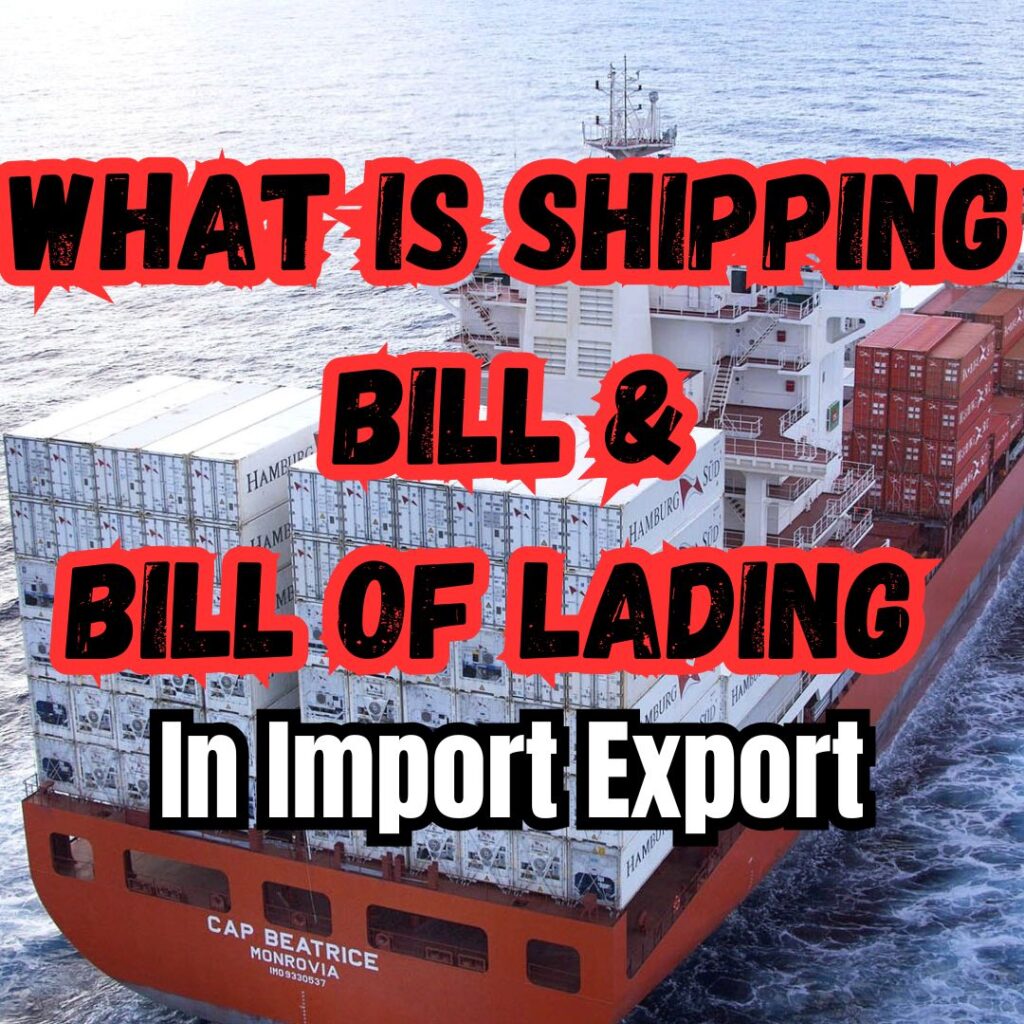Shipping Bill:
A Shipping Bill is a legal document that is prepared by the exporter or their authorized agent and submitted to the customs authorities of the exporting country. It is a crucial document in the export process.
The primary purpose of a Shipping Bill is to declare the details of the goods being exported. This includes information such as the description of the goods, their quantity, value, weight, and other relevant details.
The Shipping Bill is used by customs authorities to assess and verify the goods being exported, calculate export duties and taxes, and ensure compliance with export regulations.
There are different types of Shipping Bills, such as the Export General Shipping Bill (for most exports), Export Promotion Capital Goods (EPCG) Shipping Bill (for capital goods), and others, depending on the nature of the export.
Bill of Lading (B/L):
A Bill of Lading is a document issued by the carrier (usually a shipping company or a freight forwarder) to the shipper (exporter) acknowledging the receipt of goods for shipment. It serves as both a receipt and a contract of carriage.
The Bill of Lading includes essential information such as the description of the goods, their quantity, marks and numbers, the name of the vessel or aircraft, the destination port, and terms and conditions of the transportation contract.
There are two main types of Bill of Lading: “Straight Bill of Lading” (which is non-negotiable and is typically used when the goods are not intended for sale or transfer during transit) and “Negotiable Bill of Lading” (which can be bought, sold, or traded and is used in cases where the goods might change hands multiple times during shipment).
The Bill of Lading is a crucial document for the importer, as it is required to take possession of the goods at the destination port and, in the case of a negotiable Bill of Lading, can be used for payment and trade financing purposes.
In summary, the Shipping Bill is a document used by the exporter to declare the details of goods being exported to customs authorities, while the Bill of Lading is a transportation document issued by the carrier to acknowledge the receipt of goods and serves as proof of ownership and a contract of carriage during the shipping process. Both documents play vital roles in the smooth execution of international trade transactions.
#shippingbill #billoflading #whatisshippingbill #whatisbilloflading #whatisshippingbillinexport #whatisshippingbillnumber #whatisshippingbilldate #shippingbillfilingprocedure #whatisbillofladinginexport #whatisbillofladingnumber #customdocument



